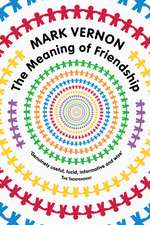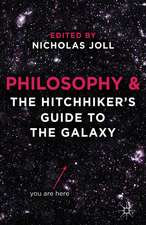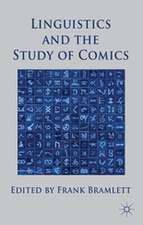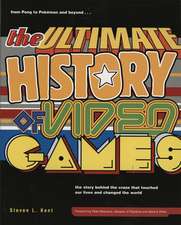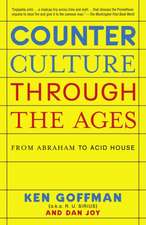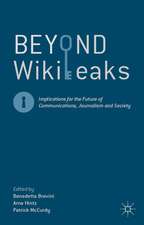British Women Film Directors in the New Millennium
Autor Stella Hockenhullen Limba Engleză Hardback – 9 mai 2017
Preț: 703.38 lei
Preț vechi: 827.51 lei
-15% Nou
Puncte Express: 1055
Preț estimativ în valută:
134.59€ • 140.81$ • 111.81£
134.59€ • 140.81$ • 111.81£
Carte tipărită la comandă
Livrare economică 02-16 aprilie
Preluare comenzi: 021 569.72.76
Specificații
ISBN-13: 9781137489913
ISBN-10: 113748991X
Pagini: 256
Ilustrații: XI, 264 p. 5 illus. in color.
Dimensiuni: 148 x 210 x 22 mm
Greutate: 0.6 kg
Ediția:1st ed. 2017
Editura: Palgrave Macmillan UK
Colecția Palgrave Macmillan
Locul publicării:London, United Kingdom
ISBN-10: 113748991X
Pagini: 256
Ilustrații: XI, 264 p. 5 illus. in color.
Dimensiuni: 148 x 210 x 22 mm
Greutate: 0.6 kg
Ediția:1st ed. 2017
Editura: Palgrave Macmillan UK
Colecția Palgrave Macmillan
Locul publicării:London, United Kingdom
Cuprins
Introduction.-1. A Century of Struggle?: British Women Directors pre Millennium.-2. Women and British Cinema Funding: From the UKFC to Creative England.-3. Women Make Documentary.-4. Sex, Class and Realism?.-5. Towards the Mainstream?.-Conclusion
Notă biografică
Stella Hockenhull is a Reader in Film and Television Studies at the University of Wolverhampton. She is co-director of the Research Centre for Film, Media, Discourse and Culture and is widely published in the field of British cinema. Her published works include Aesthetics and Neo-Romanticism in Film: Landscapes in Contemporary British Cinema (2013) and Neo-Romantic Landscapes: An Aesthetic Approach to the Films of Powell and Pressburger (2008).
Textul de pe ultima copertă
This book focuses on the output of women film directors in the period post Millennium when the number of female directors working within the film industry rose substantially. Despite the fact that nationally and internationally women film directors are underrepresented within the industry, there is a wealth of talent currently working in Britain. During the early part of the 2000s, the UKFC instigated policies and strategies for gender equality and since then the British Film Institute has continued to encourage diversity. British Women Directors in the New Millennium therefore examines the production, distribution and exhibition of female directors’ work in light of policy. The book is divided into two sections: part one includes a historical background of women directors working in the twentieth century before discussing the various diversity funding opportunities available since 2000. The second part of the book examines the innovation, creativity and resourcefulness of British female film directors, as well as the considerable variety of films that they produce, selecting specific examples for analysis in the process.
Caracteristici
Examines the variety of work produced by women film directors within the industry Discusses production, distribution and exhibition of female directors' work Features discussion of the various diversity funding opportunities available since 2000




